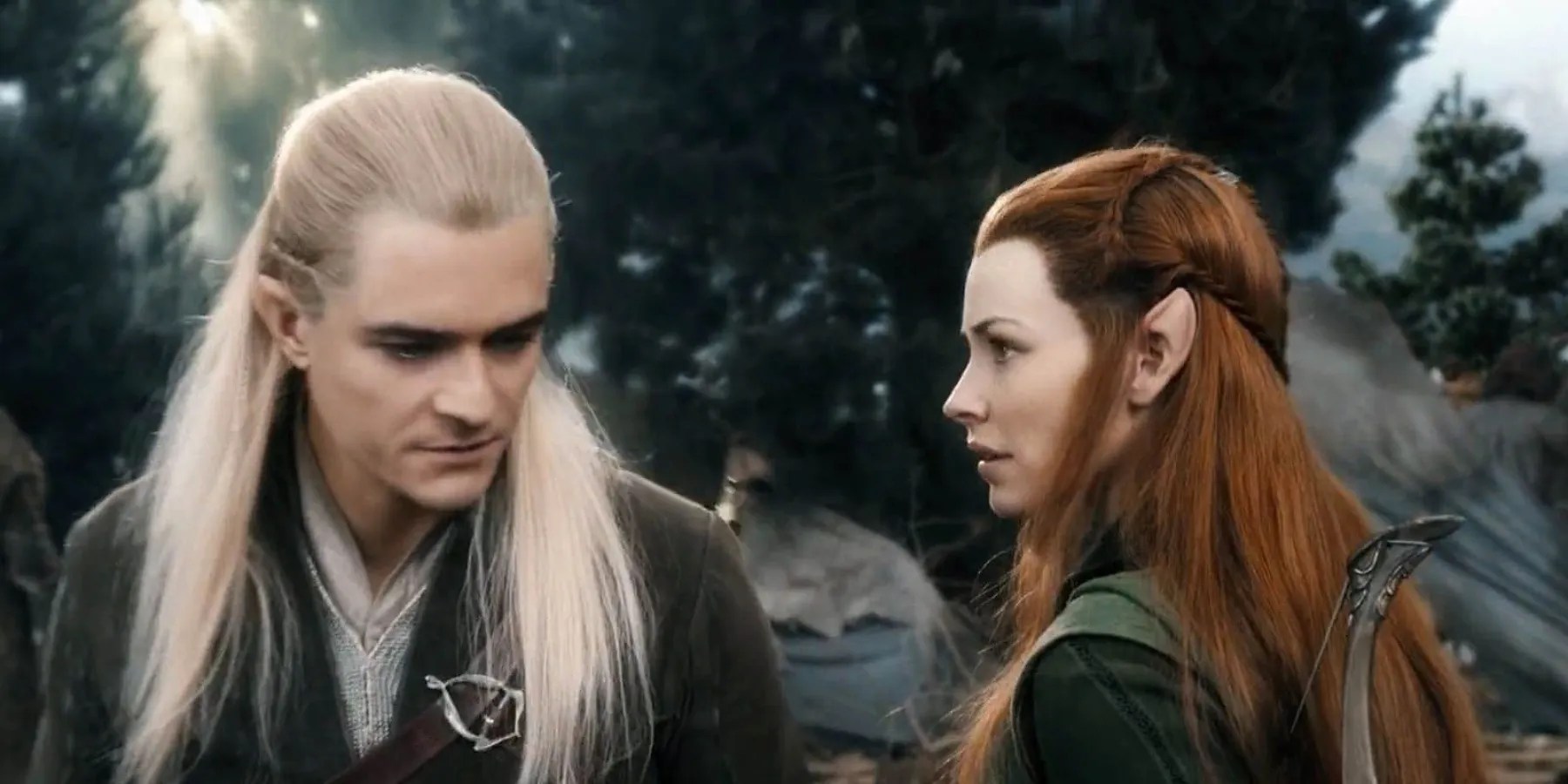One of the most overwhelmingly obvious changes that Peter Jackson and the team made when adaptingthe story ofThe Hobbitinto the film trilogy was the creation of the character Tauriel. Tauriel, the femaleelf of Mirkwood, isn’t even so much as mentioned in Tolkien’s original work, but she played a vital and pivotal role in the on-screen adaptations, not only in the dwarves journey to reclaim Erebor, but also in tying in another character who was added into the films: Legolas.
In many ways, creating the character of Tauriel was a fantastic addition on Peter Jackson’s behalf, because she brought a strong-willed, defiant, and passionate female character into a trilogy that would otherwise have been very male-driven. Tauriel is an amazing fighter, with both a bow and her signature short-swords, she is a fierce and formidable force of will, especially when standing up to Thranduil, who takes every opportunity he can get to belittle her, and she does all of this whilst being a kind, compassionate dreamer, loyal to a fault, and willing to sacrifice everything for love. In this way, she represents the perfect feminine strength, and quickly became a fan favorite. However, there is just one problem with her character: The love triangle.

RELATED:This Character In The Hobbit Was Completely Misrepresented
It is rumored that when Evangeline Lilly was cast to play the striking she-elf, she agreed under the condition that Tauriel wouldn’t be relegated in the film to simply being a more important character’s love interest. Ironically, she became two more important characters love interest instead.
Love triangles as a trope are always problematic because there is always a certain element of toxicity involved (Take Twilight’s highly controversialvampire and werewolfdichotomy for example) and Evangeline Lilly was hoping to avoid this for her character, because it undermines her strength and individuality by placing her solely in the context of the two men who are in love with her. She is meant to portray wider themes within the story, with echoes of the forbidden love between two races (like Beren and Luthien, orAragorn and Arwen) but instead she begins to feel increasingly more and more like a pawn used to shoe-horn Legolas’s character into the films.

Legolas of course is one of the members of the fellowship from theLord of the Ringstrilogy, which happens 60 years after Bilbo’s quest, but he is put intoThe Hobbitfilms to create a link for the audience back to the successful earlier movies. There are several awkward references inThe Hobbitfilms to theLord of the Rings, including an embarrassing attempt to include Gimli as a photo in Gloin’s locket, and the mention of the ranger who goes by the name of Strider at the end of theBattle of the Five Armies. But other than being a connection to theLord of the Ringsfilms, Legolas spends his entire journey chasing after Tauriel and demanding her to follow him wherever he goes, despite the fact that she is clearly in love with the dwarf Kili.
This gives Aiden Turner the perfect chance to act as his witty, charming and flirtatious self during all of his interactions with the she-elf. But as always in these unfortunate love triangle tropes, it simply lessens Tauriel’s potential as a compelling character because she is ultimately the reason for Kili’s death: he dies at the hands of an orc because he is distracted by trying to protect her. Although his and Fili andThorin’s fates were already sealed, this detracts so much from her identity as a powerful female character, and instead creates the perception of her as simply an object of male desire.

Unfortunately, this happens with a few of Tolkien’s female characters. For example,Arwen who spends 3 films withering awaybecause she gives up her mortality to Aragorn, and Eowyn, who defeats an incredibly powerful enemy, but also almost falls to melancholy from heartbreak over Aragorn. Each of these characters should have been an incredible and admired individual just for who they are, but are instead viewed as more worthy because of the men who love them.
There is of course, one exception to this rule, and that’s Galadriel. Although Galadriel is still very much a female character in a male driven story, her maininteraction being with Gandalf and Sarumanat the white council, she at least is the deciding factor in the battle against the necromancer when she unleashes an incredible volley of light magic.
Despite this, she is still heralded in the Lord of the Rings trilogy as a figure of overwhelming beauty and renown, rather than for her abilities as a ruler, or her ancient magic and wisdom. Overall, many fans feel that Tauriel’s function within the films could have been so much better is she had just been a formidable warrior and healer, instead of being caught in the middle of a petty rivalry that ultimately detracts from the main point of the story:the quest to reclaim Erebor.